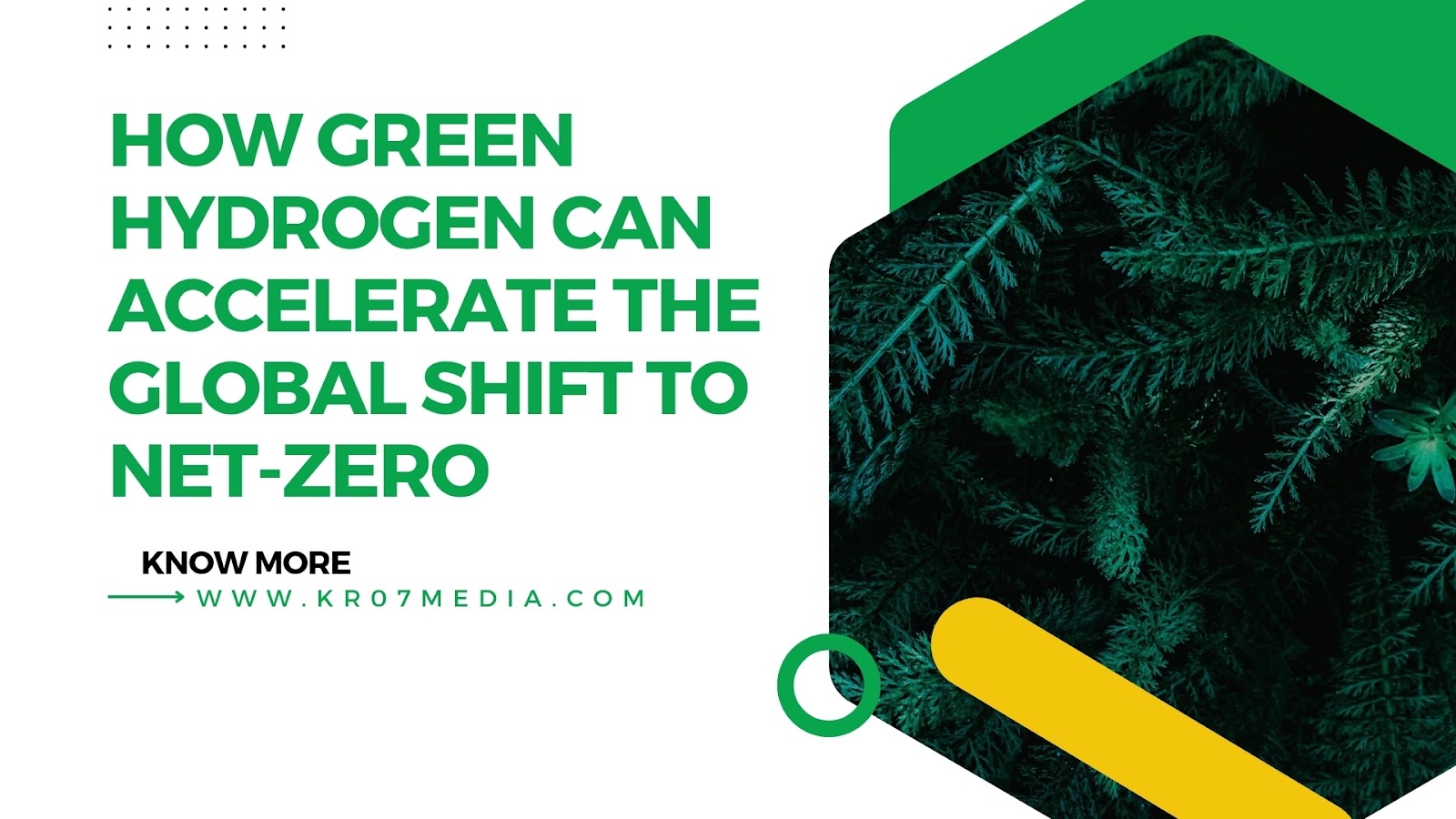As the world intensifies its efforts to combat climate change, the transition to a net-zero economy has become a top priority for governments, industries, and citizens. Net-zero refers to balancing the amount of greenhouse gases emitted with the amount removed from the atmosphere. One of the most promising technologies to help achieve this goal is green hydrogen, a clean fuel that has the potential to decarbonize various sectors and accelerate the global shift to net-zero.
What is Green Hydrogen?
Hydrogen is the most abundant element in the universe and has long been considered a potential alternative fuel. However, hydrogen can be produced in different ways, with varying environmental impacts. Green hydrogen is produced through the electrolysis of water, a process that uses renewable energy sources—such as wind, solar, or hydropower—to split water molecules into hydrogen and oxygen. The key difference between green hydrogen and other types of hydrogen (such as grey or blue hydrogen) is that its production emits zero carbon dioxide (CO₂), making it a fully clean and sustainable energy carrier.
Decarbonizing Hard-to-Electrify Sectors
One of the major advantages of green hydrogen is its ability to decarbonize industries that are difficult to electrify. For example, sectors like heavy industry (steel, cement, and chemicals), aviation, shipping, and long-haul transport have limited options for reducing emissions using electricity alone. In these sectors, green hydrogen can act as both a fuel and a raw material, helping to significantly reduce CO₂ emissions.
The steel industry, which is responsible for approximately 7-9% of global carbon emissions, offers a key example of the potential of green hydrogen. By using green hydrogen instead of fossil fuels in the steel-making process, emissions can be reduced by up to 90%, paving the way for a carbon-neutral steel industry.
Energy Storage and Grid Stability
Another key role of green hydrogen in achieving net-zero is its capacity to act as an energy storage solution. Renewable energy sources like solar and wind are intermittent, meaning they produce energy only when the sun is shining or the wind is blowing. This intermittency can create challenges for maintaining a stable and reliable electricity grid.
Green hydrogen addresses this challenge by providing a way to store excess renewable energy. When surplus renewable electricity is generated, it can be used to produce green hydrogen, which can later be stored and converted back into electricity or used as fuel when energy demand rises. This makes green hydrogen a critical tool for balancing energy supply and demand and ensuring grid stability.
Powering Clean Mobility
The transportation sector is another area where green hydrogen can make a significant impact. While electric vehicles (EVs) are gaining traction, hydrogen fuel cells offer an alternative for decarbonizing heavy-duty transport, such as buses, trucks, and trains, where the energy density of batteries may be insufficient for long-distance travel or high-power applications.
Hydrogen-powered fuel cell electric vehicles (FCEVs) emit only water vapor as a byproduct and can be refueled in minutes, offering longer driving ranges and faster refueling times compared to EVs. This makes them ideal for commercial fleets, public transportation, and other applications where downtime is costly or inconvenient.
Green Hydrogen as a Global Trade Commodity
In addition to its domestic benefits, green hydrogen has the potential to become a major global trade commodity. Countries with abundant renewable energy resources, such as Australia, Chile, and Saudi Arabia, are already investing heavily in green hydrogen production with the aim of exporting it to other regions. Europe, Japan, and South Korea, which have limited renewable energy capacity but high energy demand, are among the regions looking to import green hydrogen.
This emerging green hydrogen market could create new economic opportunities, promote energy security, and foster international cooperation in the fight against climate change.
Challenges and the Path Forward
Despite its potential, several challenges remain for green hydrogen to fully scale and contribute to the net-zero transition. One of the most significant challenges is cost. The production of green hydrogen is currently more expensive than grey or blue hydrogen due to the high cost of electrolyzers and renewable energy. However, as renewable energy prices continue to fall and electrolyzer technologies improve, the cost of green hydrogen is expected to decrease over the coming decade.
Infrastructure is another hurdle. Developing the infrastructure needed to produce, store, transport, and distribute green hydrogen requires significant investment. Governments and private sectors must collaborate to build hydrogen pipelines, refueling stations, and other necessary systems.
Finally, policy support will be critical for accelerating green hydrogen deployment. Governments need to create clear regulatory frameworks, provide financial incentives, and invest in research and development to spur innovation and drive down costs.
Conclusion
Green hydrogen holds tremendous promise as a key enabler of the global shift to net-zero. Its ability to decarbonize hard-to-electrify sectors, provide energy storage, power clean mobility, and become a global trade commodity positions it as a cornerstone of future energy systems. While challenges remain, with the right policy support and investments, green hydrogen can help the world achieve its climate goals and build a more sustainable and resilient economy for future generations.



